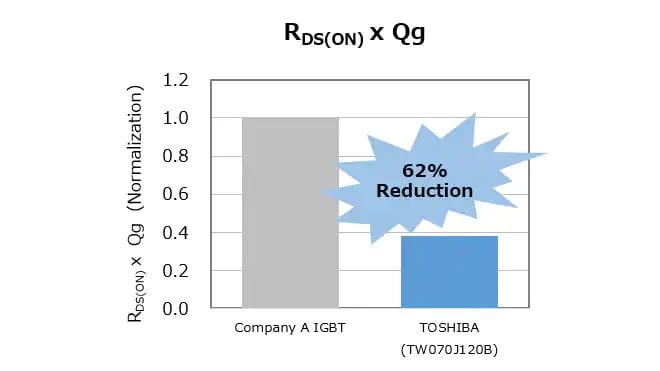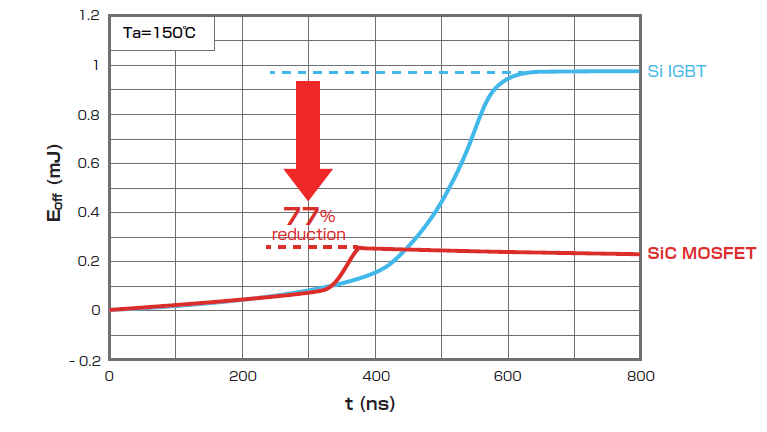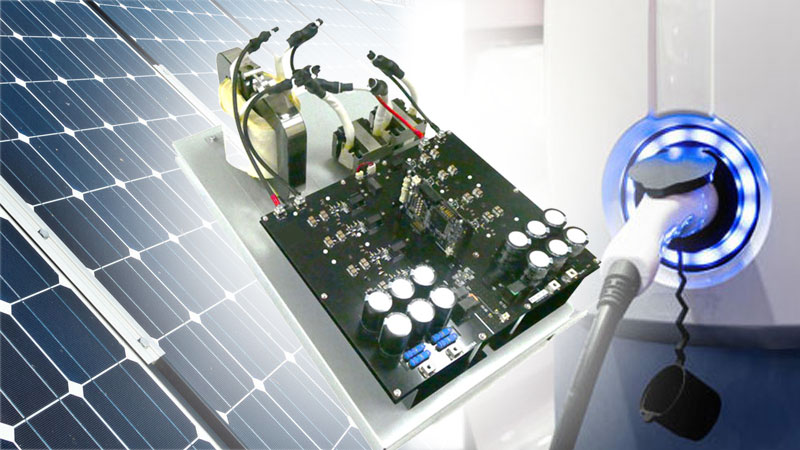- General Top
- SEMICONDUCTOR
- STORAGE
- COMPANY
-
My ToshibaSemicon
- Semiconductor Top
-
ApplicationsAutomotive
Body Electronics
xEV
In-Vehicle Infotainment
Advanced Driver-Assistance Systems (ADAS)
Chassis
IndustrialInfrastructure
BEMS/HEMS
Factory Automation
Commercial Equipment
Consumer/PersonalIoT Equipment
Healthcare
Wearable Device
Mobile
Computer Peripherals
-
ProductsAutomotive Devices
Discrete Semiconductor
Diodes
Transistors
Logic ICs
Analog Devices
Digital Devices
Wireless Devices
※
: Products list (parametric search)
Power SemiconductorsSiC Power Devices
※
: Products list (parametric search)
Isolators/Solid State RelaysPhotocouplers
Digital Isolators
Solid State Relays
Fiber Optic Transmitting Modules
※
: Products list (parametric search)
MOSFETsIGBTs/IEGTsBipolar Transistors※
: Products list (parametric search)
Diodes※
: Products list (parametric search)
MicrocontrollersMotor Driver ICsIntelligent Power ICs※
: Products list (parametric search)
Power Management ICsLinear ICs※
: Products list (parametric search)
General Purpose Logic ICsLinear Image SensorsOther Product ICsOther Product ICs
※
: Products list (parametric search)
-
Design & Development
-
Knowledge
- Where To Buy
- Part Number & Keyword Search
- Cross Reference Search
- Parametric Search
- Stock Check & Purchase
This webpage doesn't work with Internet Explorer. Please use the latest version of Google Chrome, Microsoft Edge, Mozilla Firefox or Safari.
require 3 characters or more. Search for multiple part numbers fromhere.
The information presented in this cross reference is based on TOSHIBA's selection criteria and should be treated as a suggestion only. Please carefully review the latest versions of all relevant information on the TOSHIBA products, including without limitation data sheets and validate all operating parameters of the TOSHIBA products to ensure that the suggested TOSHIBA products are truly compatible with your design and application.Please note that this cross reference is based on TOSHIBA's estimate of compatibility with other manufacturers' products, based on other manufacturers' published data, at the time the data was collected.TOSHIBA is not responsible for any incorrect or incomplete information. Information is subject to change at any time without notice.
require 3 characters or more.
3-Phase AC 400 V Input PFC Converter Reference Design

Toshiba's reference design of a power factor correction (PFC) circuit for 3-phase 400 VAC inputs illustrates how to improve power supply efficiency using 2nd Generation SiC MOSFETs. The design achieves a power conversion efficiency of 97 % and a power factor of 0.99 or more. It is a reference design for the PFC section which includes a gate drive circuit, sensor circuit and output power switch of high-power converters such as electric vehicle (EV) charging stations.
The growing adoption of EVs has increased the demand for power conversion systems that must also be highly efficient and compact. This Toshiba reference design provides an excellent starting point for the PFC stage of power converters. It can be used as the basis for both prototyping and developing your application, helping it reach its full potential.
Feature/Specification

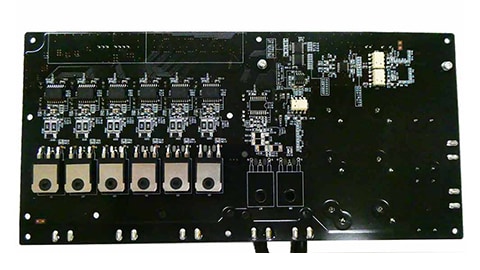
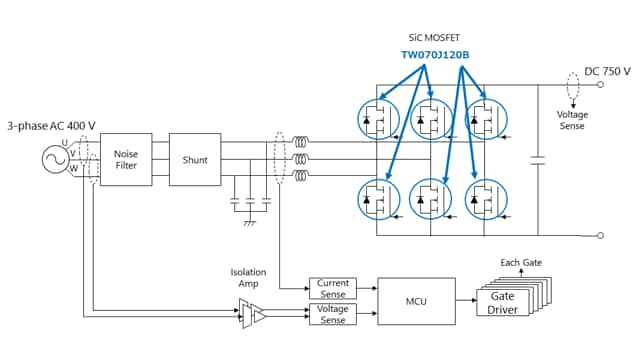
Features
- Bridgeless configuration with a 3-phase totem pole configuration that switches each phase directly.
- High power conversion efficiency is achieved by using a SiC MOSFETs for the power switch.
- The trade-off efficiency and EMI can be optimized by adjusting the gate drive circuit's switching speed.
Specifications
- Input voltage:3-Phase AC 312 to 528 V
- Output voltage:DC 750 V
- Output power:4.0kW
Example applications
EV charging system
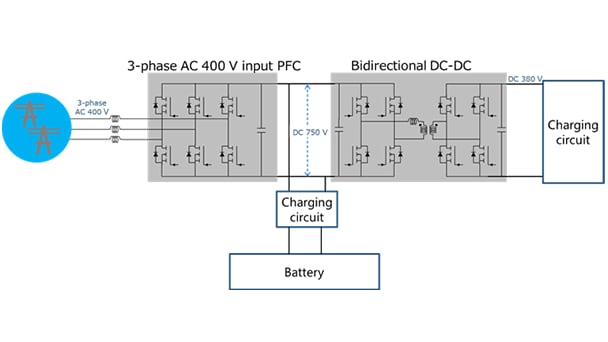
Here is an example application that uses this reference design. It is a system that permits bidirectional charging by converting 3-phase 400 VAC to DC with a high efficiency PFC power supply and combining it with bidirectional DC-DC converter(introduced in the following article).
The use of three-phase 400 VAC as input power requires a power factor corrected (PFC) power source for AC-DC conversion plus a highly efficient insulated DC-DC conversion mechanism for supplying power to the EV battery charging circuit from the DC output of PFC with minimal losses. Furthermore, if there needs to be scope for the EV battery to potentially be used as a power source for other tasks, then bidirectional DC-DC converters will clearly prove useful.
This application example intends to promote the widespread use of high-speed, low loss EV charging stations. It does this through the combination of PFC power supplies, for efficient AC-DC conversion of high power from three-phase 400 VAC, plus insulated DC-DC converters that ensure both elevated efficiency and bidirectional operation.


